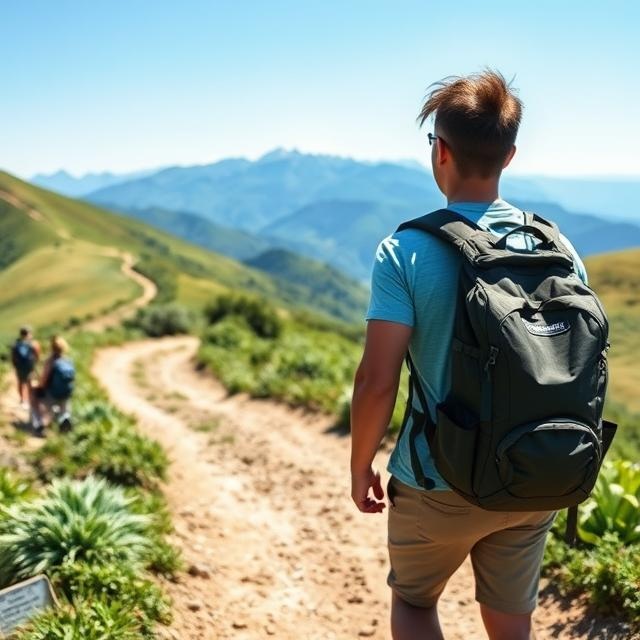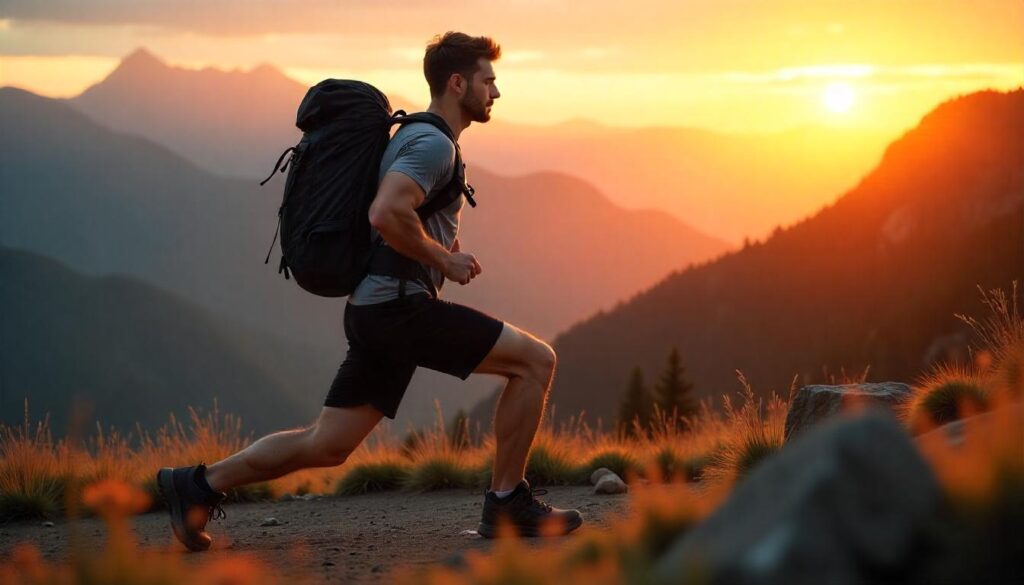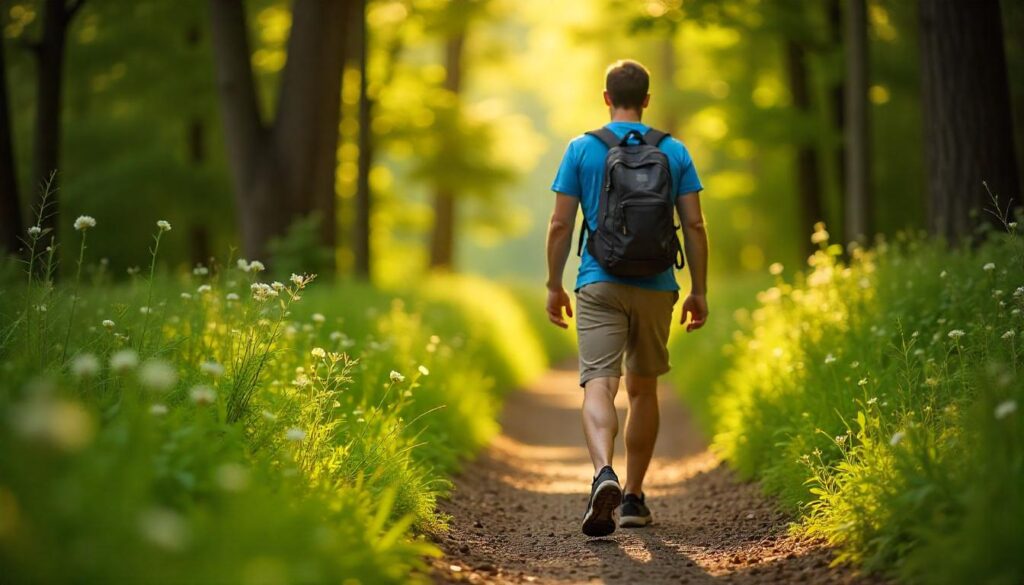
Walking in summer feels amazing—the warm sun on your skin, the fresh air, and the long daylight hours make it the perfect season to enjoy the outdoors. But without proper precautions, walking in hot weather can become uncomfortable or even dangerous. Whether you’re strolling through a city park, hiking a scenic trail, or just taking a daily neighborhood walk, knowing how to stay cool, hydrated, and safe is essential.
In this guide, we’ll explore the benefits of summer walking, how to avoid heat exhaustion, what to wear for comfort, and how to stay hydrated for an enjoyable and safe experience.
Why Walking in Summer is Beneficial
1. Boosts Physical & Mental Health
Walking in warm weather is one of the best ways to stay active and healthy. The body warms up faster, helping to loosen muscles and joints, making movement easier and reducing injury risks. Walking also promotes better heart health, weight management, and endurance.
On the mental side, walking in nature reduces stress, anxiety, and depression. Fresh air and greenery have a calming effect, helping you feel more relaxed and focused throughout the day.
2. Sunlight Exposure for Mood & Vitamin D
Sunlight is one of the best natural sources of vitamin D, which supports bone health, immune function, and mood regulation. Exposure to sunlight helps increase serotonin levels, a hormone that boosts happiness and reduces stress.
However, it’s important to limit direct sun exposure during peak hours (11 AM – 3 PM) and always wear sunscreen to prevent skin damage.
3. Improves Cardiovascular Fitness
Summer walking, especially in parks, beaches, or hiking trails, naturally increases cardiovascular endurance. Sweating helps regulate body temperature, improve circulation, and enhance lung function. Over time, this leads to better heart health, stamina, and energy levels.
How to Walk Safely in Hot Weather
Walking in the summer sun can be refreshing, but it also comes with challenges. High temperatures can lead to dehydration, fatigue, and even heat-related illnesses. To enjoy your summer walks without discomfort or risk, it’s important to understand the dangers of heat, choose the right time for your walks, and adjust your pace accordingly.
Signs of Heat Exhaustion and How to Prevent Overheating
When walking in hot weather, your body works harder to cool itself down. If it fails to regulate temperature properly, you may experience heat exhaustion. Signs include dizziness, excessive sweating, nausea, weakness, and headaches. If ignored, heat exhaustion can escalate into heat stroke, which is a serious medical emergency. To prevent overheating, always dress appropriately, drink plenty of fluids, and take breaks in shaded areas. Wearing light-colored, breathable clothing can also help reflect heat and keep your body cool.
Best Times of the Day for Summer Walking (Morning vs. Evening Walks)
The hottest part of the day is usually between 12 PM and 4 PM, so it’s best to avoid walking during these hours. Instead, choose early morning or late evening walks when temperatures are lower, and the sun isn’t as intense. Morning walks have the added benefit of fresh air and fewer crowds. Whereas, evening walks allow you to relax after a long day while enjoying cooler temperatures and beautiful sunsets.
How to Adjust Your Walking Pace to Avoid Fatigue
Walking too fast in extreme heat can drain your energy quickly. To prevent exhaustion, start your walk at a moderate pace and listen to your body. If you begin to feel fatigued or out of breath, slow down and take short breaks in shaded areas.
What to Wear for Summer Walking
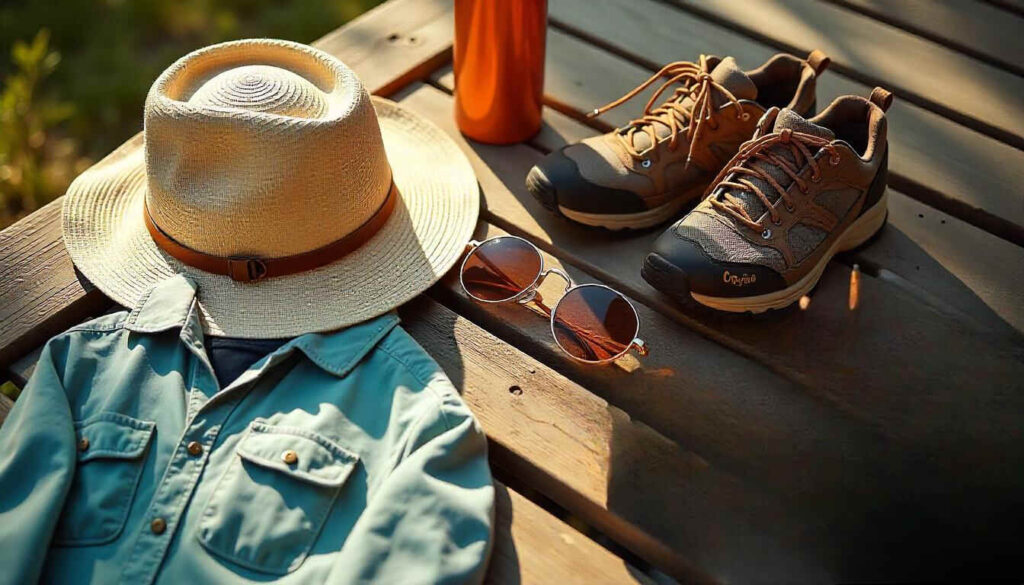
Your choice of clothing plays a crucial role in staying cool and comfortable during summer walks. The right outfit can protect you from the sun’s harmful rays, prevent excessive sweating, and reduce the risk of overheating.
Best Breathable Clothing Materials for Staying Cool
Not all fabrics are created equal when it comes to summer walking attire. Avoid heavy materials like cotton, which absorbs sweat and stays damp for too long. Instead, opt for lightweight, moisture-wicking fabrics such as:
- Polyester and nylon – These synthetic fabrics dry quickly and help wick sweat away from your skin.
- Merino wool – A natural fiber that regulates body temperature and prevents odor buildup.
- Bamboo fabric – A soft, breathable, and eco-friendly option with natural UV protection.
Wearing loose-fitting clothes allows better airflow and reduces sweat buildup. Light-colored clothing is also a good choice since it reflects sunlight rather than absorbing heat.
Choosing the Right Hats, Sunglasses, and SPF Clothing for Sun Protection
Protecting yourself from the harsh summer sun is essential for a safe and enjoyable walk. A wide-brimmed hat shields your face, neck, and ears from direct sunlight, reducing the risk of sunburn.
Sunglasses are another must-have accessory. Look for pairs with UV400 protection to shield your eyes from harmful ultraviolet rays. Polarized lenses can also reduce glare, making it easier to see in bright conditions.
Best Summer Walking Shoes for Comfort and Foot Health
The best summer footwear should be lightweight, breathable, and well-cushioned. Look for shoes with:
- Mesh uppers for maximum airflow and sweat reduction.
- Cushioned insoles to prevent foot fatigue.
- Flexible soles that provide proper traction on different surfaces.
Avoid thick socks that trap heat and moisture, leading to blisters. Instead, wear moisture-wicking socks made from merino wool or synthetic fibers to keep your feet dry.
How to Stay Hydrated During Summer Walks
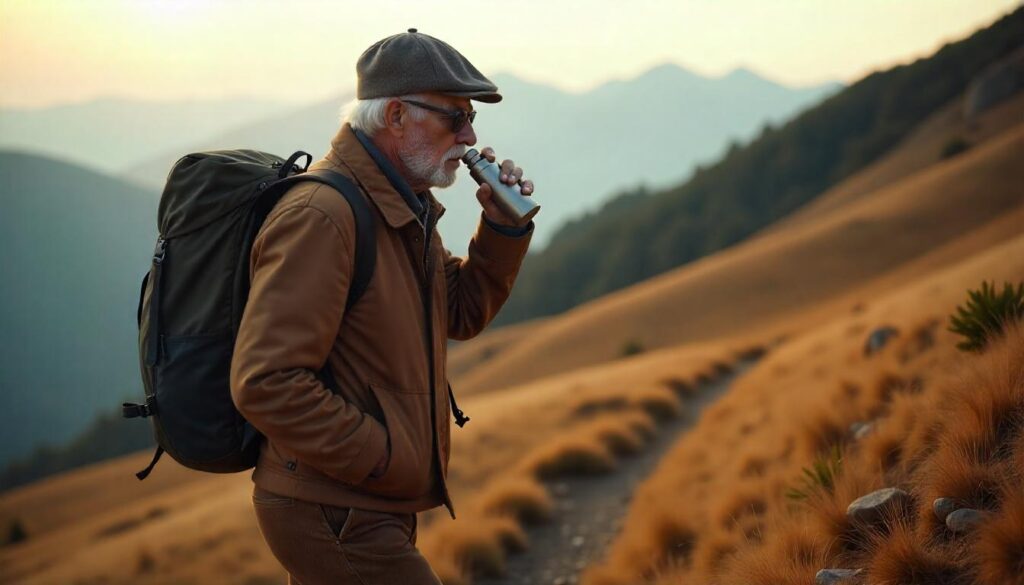
Proper hydration is essential when walking in hot weather. Losing even a small amount of water through sweat can lead to dehydration, which causes headaches, dizziness, and muscle cramps.
How Much Water to Drink Before, During, and After Your Walk
Drink at least 16-20 ounces of water about 30 minutes before your walk to ensure your body is well-prepared. During your walk, aim to drink 7-10 ounces every 15-20 minutes to maintain hydration level. If you’re walking for an extended period, take small sips. After finishing your walk, drink at least 16-24 ounces of water to replace lost fluids and aid muscle recovery.
Best Hydration Packs and Water Bottles for Long Walks
Look for packs with insulated reservoirs to keep water cool for longer. If you prefer carrying a water bottle, choose an insulated stainless steel bottle to maintain the temperature of your drink. Soft, collapsible bottles are also great for saving space in your backpack when empty.
Importance of Electrolytes and How to Prevent Dehydration
When you sweat, your body loses electrolytes like sodium, potassium, and magnesium. These minerals are crucial for maintaining fluid balance, preventing muscle cramps, and keeping your energy levels up.
To prevent dehydration, supplement your water intake with electrolyte-rich drinks such as sports drinks, coconut water, or electrolyte tablets dissolved in water. Eating hydrating foods like watermelon, cucumbers, and oranges can also help maintain fluid balance naturally.
Best Walking Trails for Summer in the USA

Choosing the right trail for Summer walks can make all the difference, helping you stay cool while enjoying scenic views. Whether you prefer shaded forest paths, coastal breezes, or well-maintained urban routes, there are plenty of excellent summer walking trails across the USA.
Top Shaded Walking Trails to Avoid Excessive Heat
Shaded trails are perfect for summer walks because they provide relief from direct sunlight and help keep temperatures lower. The Appalachian Trail offers several shaded sections, especially in states like North Carolina, Virginia, and Maine. These forested paths are surrounded by lush greenery, making them ideal for staying cool while enjoying nature.
Another excellent choice is Muir Woods National Monument in California. With its towering redwood trees, the trail remains shaded throughout the day, offering a peaceful escape from the summer heat.
Best Coastal Walks with Cool Breezes
Coastal walks are perfect for summer because the ocean breeze naturally keeps temperatures down. One of the most scenic coastal trails is the Cliff Walk in Newport, Rhode Island. This stunning path follows the shoreline, providing incredible ocean views with the cooling effect of the sea breeze.
On the West Coast, Big Sur’s Bluff Trail in California offers breathtaking views of the Pacific Ocean. Walking along the cliffs, you can enjoy the fresh coastal air while taking in the dramatic landscape.
National Parks and Urban Trails Ideal for Summer Walking
If you enjoy exploring national parks, there are plenty of summer-friendly walking trails. Yellowstone National Park offers scenic routes like the Mystic Falls Trail, which features shade from surrounding pine trees and a rewarding waterfall at the end.
Great Smoky Mountains National Park is another great destination, with shaded trails like the Alum Cave Trail, where cooler temperatures make summer walking enjoyable.
Tips for Enjoying Your Summer Walks

Walking in summer can be a great experience if you take the right approach. By planning your routine, adding social elements, and keeping yourself entertained, you can make your walks more enjoyable and beneficial.
How to Build a Summer Walking Routine
Start by setting a consistent schedule, such as early morning or evening walks when temperatures are cooler. Aim for at least 30 minutes a day, five times a week, to stay active and improve your health. Choose trails or paths that match your fitness level and gradually increase your walking distance over time. Use any fitness app to track your progress, which can motivate you to stay consistent.
Benefits of Walking Groups and Social Walks
Walking alone can be peaceful, but joining a walking group can add motivation and make the experience more enjoyable. Many communities and parks organize group walks where you can meet like-minded people while staying active. Walking with friends or family members can also make it more fun and provide extra encouragement.
Listening to Music, Podcasts, or Audiobooks for a More Enjoyable Walk
Adding music, podcasts, or audiobooks to your walks can make the experience even better. Upbeat music can keep you energized, while a good podcast or audiobook can turn your walk into a learning opportunity. If you prefer a relaxing walk, listening to nature sounds or instrumental music can create a calming atmosphere.
If you’re enjoying summer walks and want to take your outdoor adventures to the next level, check out our in-depth guide on Hiking for Beginners to learn essential tips for hitting the trails with confidence.
Common Mistakes to Avoid When Walking in Summer

Walking in hot weather requires some extra precautions. Avoiding common mistakes can keep you safe, comfortable, and fully prepared for your summer walks.
Overexertion and Ignoring Heat Warnings
One of the biggest mistakes people make during summer walks is pushing themselves too hard in extreme heat. Overexertion can lead to heat exhaustion, dehydration, and even heatstroke. If temperatures are extremely high, consider shortening your walk or choosing a shaded route.
Wearing the Wrong Footwear and Clothing
Many people underestimate the importance of proper walking gear in summer. Wearing thick or dark-colored clothing can trap heat and make you uncomfortable. Instead, choose lightweight, breathable fabrics like moisture-wicking polyester or merino wool. Avoid cotton, as it absorbs sweat and can feel heavy when damp.
Not Carrying Enough Water or Snacks
Not carrying enough water or electrolyte drinks can lead to muscle cramps. Always bring a water bottle and sip water regularly, even if you don’t feel thirsty.
Snacks are also important for maintaining energy levels. Healthy options like nuts, granola bars, or fruit provide the necessary nutrients to keep you going. Avoid sugary drinks or processed snacks, as they can lead to energy crashes.
Conclusion
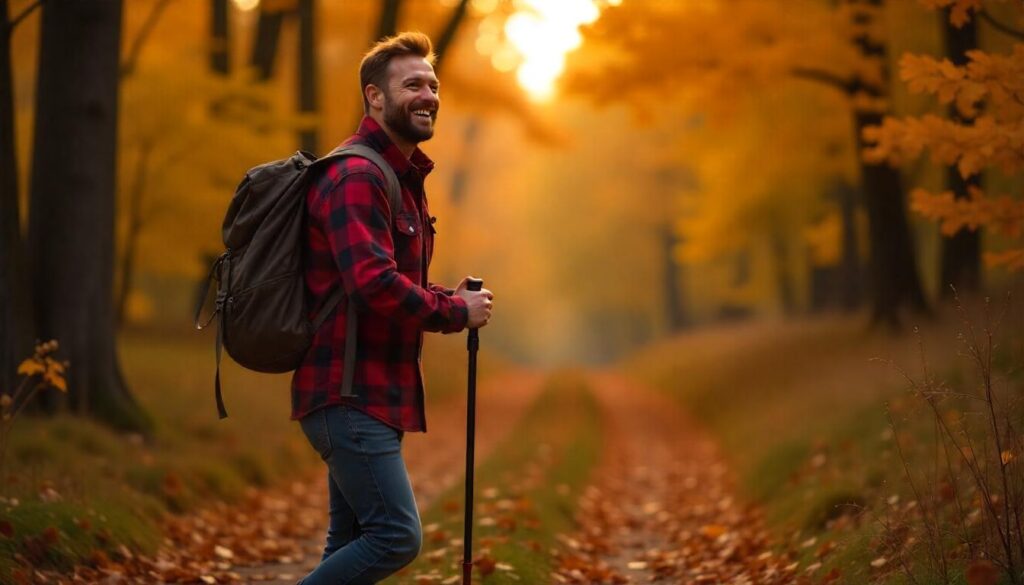
Summer walking is one of the best ways to stay active, enjoy nature, and boost both physical and mental well-being. Whether you’re strolling through shaded forest trails, walking along a breezy coastline, or exploring urban parks, it’s a simple yet effective way to stay fit while making the most of the warm weather. Walking regularly can improve heart health, reduce stress, and help you stay energized throughout the season.
However, staying safe during summer walks is just as important as enjoying them. Always walk during the cooler parts of the day, wear breathable clothing, stay hydrated, and listen to your body to avoid overexertion. Choosing the right footwear, protecting yourself from the sun, and being mindful of heat exhaustion symptoms will ensure that your walks remain enjoyable and risk-free.
With so many beautiful trails across the USA, this is the perfect time to explore new paths, challenge yourself with longer distances, or join a walking group for extra motivation.
Ethan Marlowe is an experienced hiker and outdoor gear specialist based in Colorado. With over 7 years of hands-on experience trekking through the Rockies, Pacific Northwest, and East Coast trails, he delivers practical advice, expert gear reviews, and survival insights. His goal is to help hikers of all levels make smarter decisions on and off the trail.

